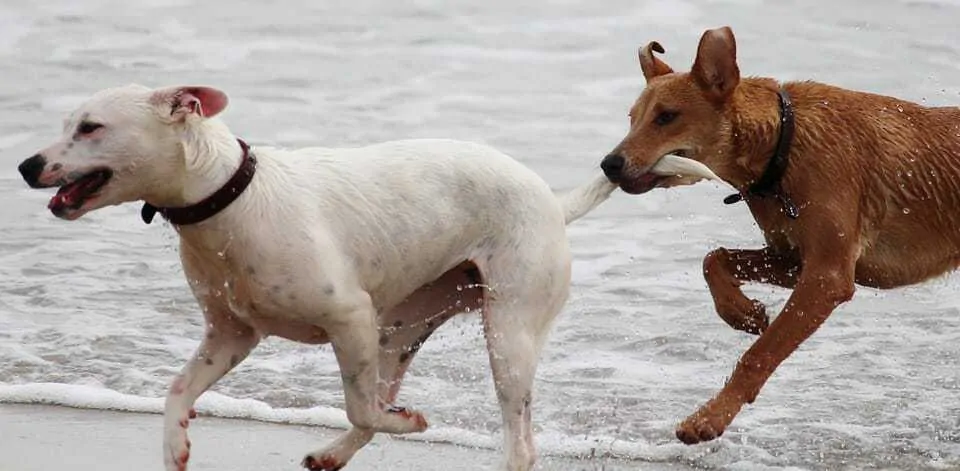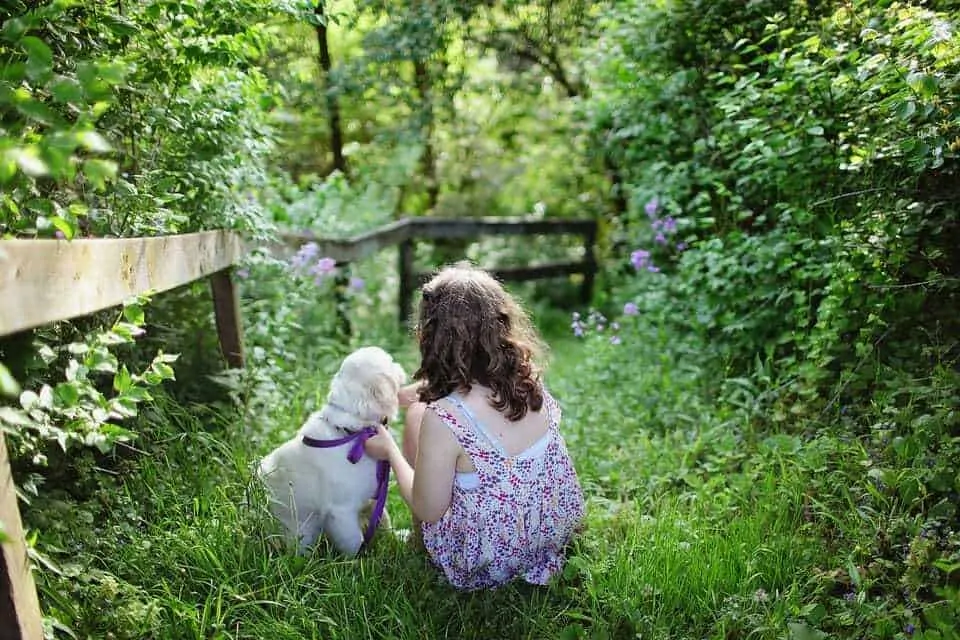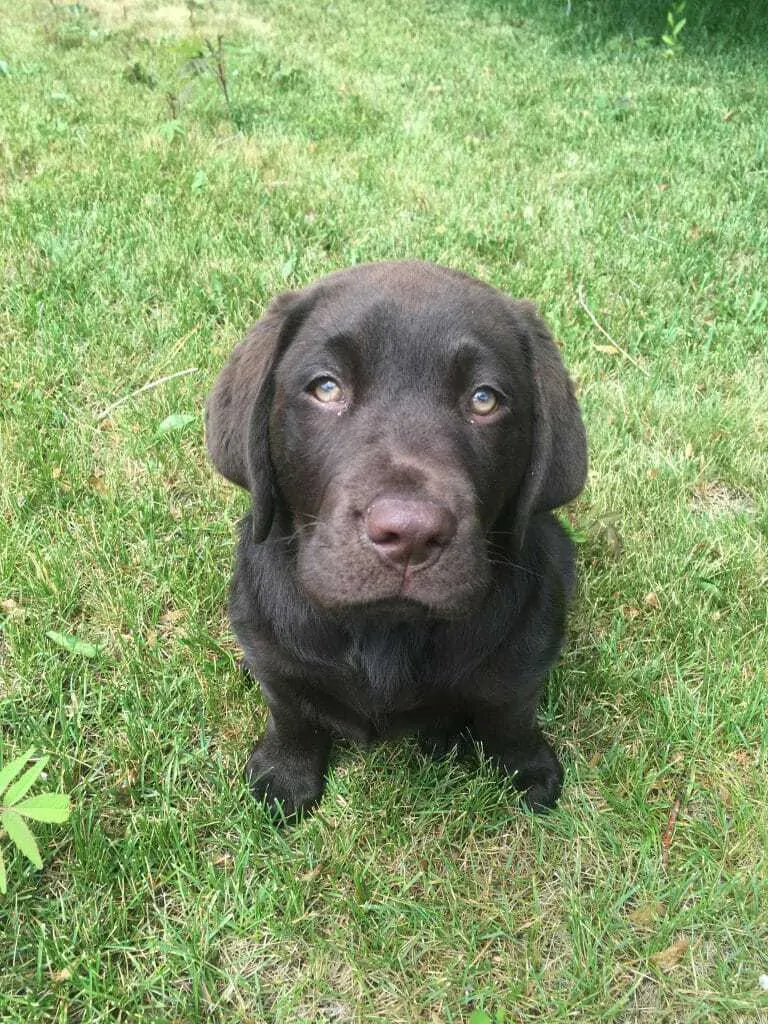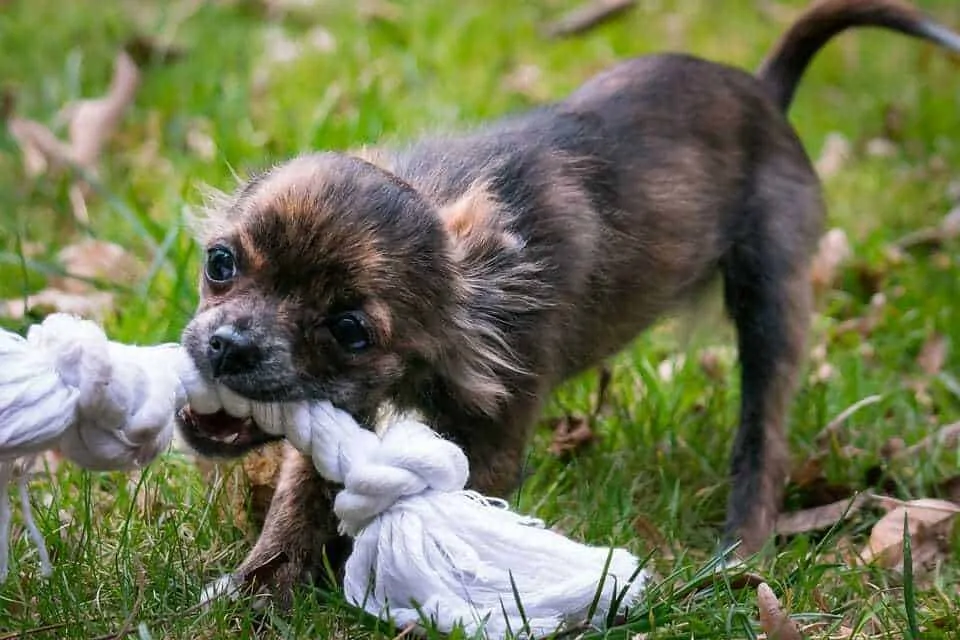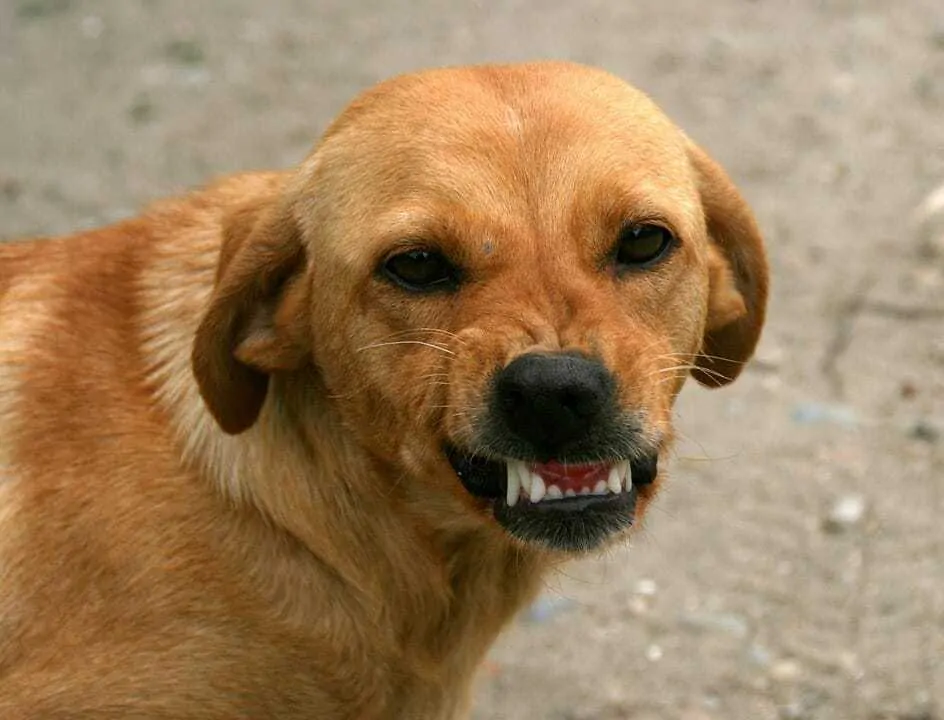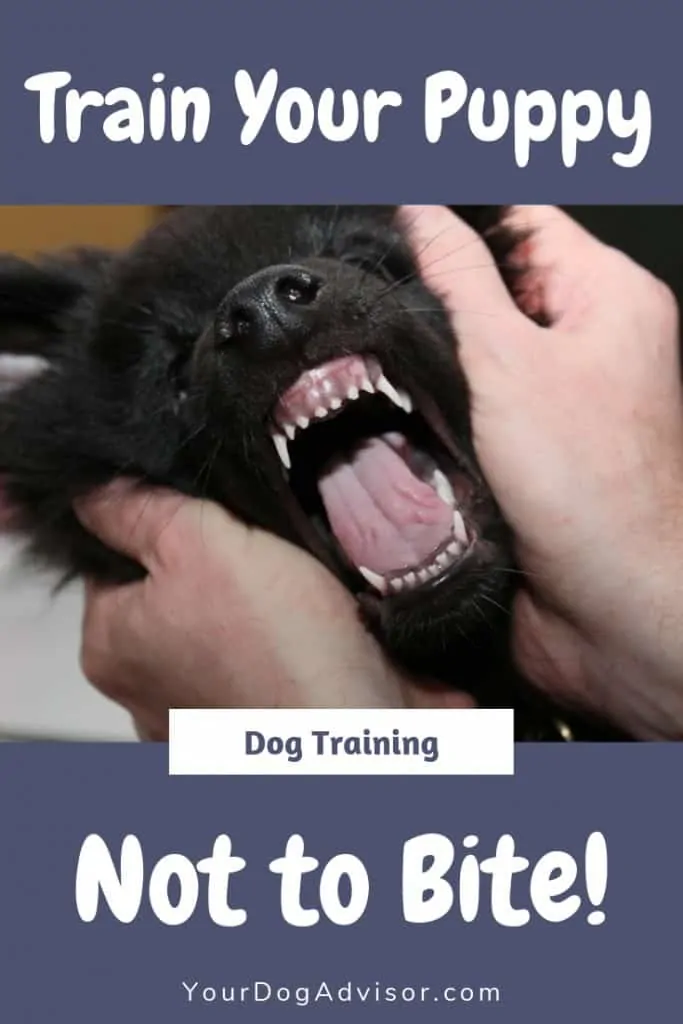Everyone loves puppies. They’re cute, cuddly, and fun to wrestle with. That is, until those tiny puppy teeth come out.
As much as most people don’t want to deal with a bitey puppy, the reality is that all puppies use their jaws during play. Like house training, bite training just one of those things you need to prepare yourself for before getting a new puppy. Even some older dogs, especially those who did not receive proper training early on, can show a propensity for grabbing on to arms, legs, and clothing anytime they feel playful.
Luckily, breaking the biting habit doesn’t usually require the intervention of a professional trainer or a lot of complex work on your part. With a little patience, a lot of consistency, and following a few simple steps, you can help your puppy or dog learn to control their mouth.
Contents
Why Are Puppies So Prone to Mouthing?
There is a reason so many new puppy owners have to work on their puppy’s biting behaviors. And it’s the same reason you can’t give a toddler a marble collection. Babies, whether human or dog, explore their world with their mouths. Every new object needs to be tasted and felt with that super sensitive oral membrane.
This is why puppies chew on everything and why they enjoy grabbing your fingers as much as their favorite tug toys.
Playing with other puppies and even older dogs helps puppies learn how to control the force of their bite. When other puppies aren’t around, you have to step into the role of teacher.
As puppies grow, their need to mouth evolves into a tendency to bite. While biting may seem like a bad habit to us, it is an essential tool for play and communication for dogs. Without opposable thumbs to grab and wrestle with, dogs come to rely on their mouths for play. They grab toys and toss them into the air. They yank on each other’s collars and legs. And they grab each other by the scruff and pull one another to the floor.
>>>Painful gums can also cause puppies to bite more. Learn how to survive your puppy’s teething phase.
Not only is this behavior completely normal in the puppy world, but it is essential in order for a pup to grow into a socially healthy adult dog. Without practice biting during play, they would never develop bite inhibition, a key to normal social behavior.
Why is Bite Inhibition So Important?
Dogs’ closest ancestors, wolves, live in tight family groups and rely on one another for survival. But that doesn’t mean that fights don’t occasionally break out. What determines how the pack fares after one of these fights has everything to do with bite inhibition.
>>>Before you bring home your new pup, make sure you are ready with these 22 essential puppy items.
If either of the wolves is wounded, the whole pack will suffer. They’ll be fewer members who can hunt, they won’t be able to travel as far, and they won’t be as well equipped to defend their turf from other packs. Bite inhibition allows wolves to get into disagreements without someone ending up hurt.
Without hands, dogs have to use their mouths during play. But, in order to engage in healthy play, they have to learn how to control how hard they bite down.
Domestic dogs have this same ability. And just like wolf pups, they learn it from their family when they are young.
When puppies play together and one bites the other too hard, the victim squeals and play momentarily stops. The biter quickly learns that how hard they bite affects whether the game goes on or the fun is ruined. When you bring your new puppy home, you need to continue this bite inhibition training. And not just because puppy teeth hurt.
Dogs who learn to control their bite force during play early on, are less likely to injure someone during an aggressive outburst as an adult. Whether that someone is another dog who wanders into the yard or a young child who accidentally steps on their tail. Just like the fighting wolf family, dogs with good bite inhibition can control how hard they bite even when acting aggressively.
In order to stop your puppy from biting and teach them bite inhibition, you need to approach puppy bite training in a very specific way.
How to Teach Your Puppy Bite Inhibition While Reducing Biting
When your puppy sinks their razor-sharp teeth into your finger, it can be hard not to react with your own aggression. But using punishment to try and stop your dog from biting isn’t a good option for a number of reasons.
If you have children in the house, teaching your puppy not to bite isn’t just important for your kids’ safety now, that bite inhibition will also translate to an adult dog that’s less likely to hurt someone if they bite out of fear or anger later on.
First off, most puppies react to any kind of attention as if you’ve engaged them in play. While you may be grabbing their muzzle in an attempt to make them uncomfortable for hurting you, they’ll probably just think you’ve upped the roughness factor of the game. Even just yelling at your dog is likely to come across as an invitation to play harder and bite more. After all, dogs love to bark at each other during play.
Secondly, and maybe more importantly, the only way a dog can learn to control their bite is if they have the opportunity to practice different levels of bite force. If your reaction to every mouthing is to throw your dog in the crate and walk away angry, they will learn that biting makes really bad things happen. But this won’t stop them from reacting to a fearful or heated situation by biting later on. And, since they never had the chance to learn the difference between soft bites and hard ones, they are likely to do more damage than they mean to.
To help teach your dog not to bite while still supporting healthy bite inhibition learning, try putting the following into practice.
Play Bites Means Play Stops
Most puppy biting happens during play, or at least, anything your puppy interprets as play. To help them learn that different types of bites have different results, you need to step into the role of littermate during play.
Play is a valuable time to teach your dog how to interact appropriately with people, even while their energy is up. Take time every day to play and engage your puppy this way so they can learn bite inhibition and to strengthen your bond with them.
Anytime you are playing with your puppy, follow these steps to help them learn bite inhibition and reduce the frequency of their bites:
- As you play, expect your puppy to mouth you. As long as the mouthing isn’t painful, continue to engage them.
- As soon as they bite you hard enough to cause pain, let your hand (or whatever body part they bit) go limp. Do not yank your arm back. This movement might entice your pup to chase, jump, or otherwise ramp up the energy and bite harder.
- At the same time, let out a quick “Yip!”. This sound is only meant to startle your dog enough to break up the play behavior. If you don’t feel comfortable yipping or your dog doesn’t react to it, you can try any abrupt, neutral sound, such as “Eh eh!” or “All done!”.
- Then, immediately turn away from your dog. If they attempt to continue playing, stand up. You want to show them that hard bites result in play ending.
- After about 20 seconds, get back down and start playing with your puppy again.
- Repeat this process every time they bite too hard. Don’t start the 20-second timer until your dog stops trying to play with you. You may need to walk away or even step out of the room (assuming someone else is there to keep an eye on the pup).
As your puppy starts to adjust their bite strength in response to this training, you can start adjusting how hard of a bite you will tolerate. Some owners may be fine with any mouthing that isn’t painful, while others, especially those with small children, may not want their pup to mouth at all.
<iframe width=”560″ height=”315″ src=”https://www.youtube.com/embed/068K5Zlph9U” frameborder=”0″ allow=”accelerometer; autoplay; encrypted-media; gyroscope; picture-in-picture” allowfullscreen></iframe>
This video goes in-depth on the importance of bite inhibition training with puppies and dispels some of the myths behind other puppy bite training methods.
To accomplish this, wait until you have seen progress in how frequently your puppy bites hard enough to cause pain. Then repeat the above steps but in response to slightly softer bites, maybe any bite where you can feel them press down. As they learn not to press down when they mouth, adjust your tolerance again and react to any teeth contact at all.
By using this method of decreasing tolerance, you give your dog a chance to learn to adjust their bite force while eventually getting rid of bitey play behavior altogether.
>>>Puppies need a lot of training and socialization. To get your pup started off on the right paw, here are 10 things you should do in the first 10 days.
Nipping Doesn’t Get Attention
We all know puppies don’t just bite during active play. Sometimes they use biting to try and get us to engage in play or when they just want some attention.
Biting isn’t the only annoying behavior dogs use to get attention. Some will paw, scratch, bark, and jump up. By only giving your puppy attention when they ask politely, you can avoid all of these problem behaviors.
Herding breeds, especially, are prone to nipping at heels and pant legs, but all dogs can be seduced into pouncing and biting by movement. When that moving object is you, it’s important to react the right way to help your dog learn not to bite in those situations.
>>>Before you get a new puppy, use this personality test to make sure they’ll be a good fit for your lifestyle.
If all your dog aimed to get out of the nip was a little attention, then yelling at them or even looking at them might encourage the behavior in the future. Instead, your goal when your dog bites to get your attention or engage you in play is to show them that all they’ve succeeded in doing is to get you to ignore them. If you consistently ignore your dog for this attention seeking behavior, then they will eventually resort to other means to get you to engage them.
Herding breeds are especially prone to nipping, but all dogs have a propensity for biting at moving objects.
You may have to adjust these steps depending on the exact situation, but, in general, this is how you should react if your puppy bites or nips you when you aren’t actively playing with them.
- If you are moving when you feel your puppy’s teeth on the back of your leg, shoe, hand, or whatever part of you they’ve targeted, then immediately freeze. If you weren’t moving, then turn your back to your dog.
- Make sure not to look at or talk to your dog. Simply ignore them.
- Most likely, they will try biting harder, jumping up, barking, or otherwise upping the ante to get you to pay attention to them since the first nip clearly didn’t work. Continue to ignore them, no matter how hard they try. If you break now to yell at them, grab them, or otherwise engage, all you are doing is teaching them that nipping doesn’t work, but biting really hard or barking does.
- If your pup really gets out of hand and starts biting harder than you can handle, immediately walk away. If you have to, shut a door or gate between you and your puppy so they can’t physically get to you.
- You should only engage with your dog after they have calmed down or when they offer a more appropriate behavior such as a sit. As soon as this happens, calmly praise and pet your dog. If you have time, engage in a quick game of tug or fetch.
By waiting to engage and play with your dog until they offer a more appropriate behavior, you’re not only teaching them that biting won’t get them what they want but also that calm behaviors, such as sit, will get them attention.
As your dog figures out this lesson, they are more and more likely to offer an acceptable behavior when they want attention. Make sure you reward them when they calmly approach you, walk up to you and sit, or otherwise engage you in a positive way. If you ignore them when they do this, then they won’t have any choice but to return to more obnoxious ways to get your attention.
Only rewarding your dog with attention after they sit is a great way to instill in them a polite way to engage you. Just make sure you don’t ignore them when they do it!
Redirect to Appropriate Objects
Another key to the puppy biting prevention puzzle is providing an appropriate outlet for mouth play.
Puppies need something to bite and chew on, your job is to teach them what they can put in their mouth and what they can’t. Make sure you have plenty of chew toys available to your puppy at all times. Get a variety of toys made with different textures and materials so they have plenty to explore.
Remember, chew toys are meant to give your dog an outlet for mouthy behavior outside of playtime. During play, you want to use the opportunity to teach your dog bite inhibition, which means, at least at first, they are allowed to bite your skin.
But, using chew toys can be a valuable way to engage your dog’s natural mouthing tendencies when you don’t have time to play. For times like these, keep a couple especially enticing chew objects strategically placed around the house and use them during times you know your pup becomes extra bitey.
Since many young puppies get mouthy during petting or brushing, keeping a favorite stuffy in the living room is a great idea. Before you start loving on your dog or break out the brush, show them the stuffy and start a game of tug. As they mouth the object, start brushing or petting. As long as they keep their mouth on the stuffy, praise them and keep the game going. If at any point they redirect on your skin, use the squeal method from the first section and stop petting/brushing until they start playing with the toy again.
If you don’t have time to play with your dog and teach them bite inhibition, using a toy to engage their natural mouthing instincts is a good way to keep their teeth off your skin and buy you time to relax or get some chores done.
Many dogs react to movement by getting nippy. For these pups, keeping a long rope toy near the back door or anywhere else your pup may get overexcited, can be very helpful. Use the above steps and ignore your dog as soon as they start nipping at your feet or hands. As soon as they’ve calmed down or offered a better behavior, break out the rope toy and tug them around as you move so they don’t have the opportunity to go for your body again.
If your dog gets mouthy when you’re trying to relax, you may need to add a short walk or some trick training time to your schedule to tire them out first. Having a good supply of appropriate chew treats can also help redirect all that mouthy energy away from you when you don’t have the energy to play back.
Working With Bitey Older Dogs
If you happen to have an adolescent or adult dog who shows similar bitey behavior, it’s not too late to work with them using the methods outlined above. But, for adult dogs that never learned bite inhibition, it is unlikely you will be able to have much effect on how hard they bite. Instead, your goal with bite training will be to teach them that biting makes play stop and causes you to ignore them. Over time, they will learn to use more appropriate behavior to get your attention and how to play with humans without using their mouth.
Older dogs can be overly mouthy when they play, especially if they were not trained bite inhibition as puppies. But make sure you know the motivation behind your dog’s biting before setting up a training routine.
In addition to the above steps, bitey adult dogs will also benefit from increased exercise, impulse control training, and more playtime with socially intelligent dogs.
Of course, if your dog displays any type of biting behavior outside the realm of attention-seeking or play-related behavior, you may want to consider seeking the help of a professional trainer. Aggressive, fearful, or idiopathic biting requires training protocols based on your dog’s specific needs.
Continue Reinforcing Proper Biting Behavior
As your puppy grows, remember to continue to reinforce proper play and attention-seeking behavior.
Many dogs go through a second bitey phase as they move into adolescence. Just like teenagers, adolescent dogs like to push boundaries, even those you thought you had already taught them. Adolescent dogs also have a lot more energy than puppies, and an increase in nipping may be their way of telling you they need more stimulation or exercise.
>>>Puppies are always growing and changing. Prepare yourself by learning about the different stages of puppy development.
Getting a dog walker, finding a reputable doggy daycare, or just increasing the time you spend wearing out your dog can help get both of you through this tough phase.
Bite training isn’t just about saving your fingers and toes from razor-sharp puppy teeth, it’s also about building a well-mannered adult dog with healthy social skills.
But most importantly, stay consistent with the bite training methods outlined above. You may notice your dog getting better, than suddenly much, much worse. This is known as an extinction burst, and it’s a sign your dog is about to give up that behavior for good. As long as you continue reacting to their biting the same way, they will eventually understand that biting NEVER gets them what they want and they will stop doing it altogether.
While this method of bite training may not change your puppy’s behavior overnight, it will help them learn bite inhibition and how to appropriately get your attention. Not only will this help you survive the puppy stage, but you will end up with an adult dog that is safer and more pleasant to be around.

Sara Seitz has spent most of her life in the pet industry and has a bachelors in animal behavior from Colorado State University. Sara started working with dogs and cats as a high schooler at a rural boarding kennel. There she learned a lot about the bad and the ugly of the pet service industry. But not even the toughest day at that job would dissuade Sara from following her dream of working with animals.
In college, Sara got a job at a dog daycare and boarding facility in Fort Collins, Colorado. Her new career provided even more opportunities for learning about dog behavior than her classes did. As general manager of the daycare, Sara helped the company launch a new in-home pet sitting branch and trained to become a certified dog trainer. Between shifts taking care of peoples pets in-home and supervising dogs during playtime at the daycare, Sara organized and taught obedience classes.
Sara has always been passionate about bettering the lives of our canine companions. She soon found that advocating for and educating owners in the power of positive reinforcement training was one of the best ways to help dogs and their owners live happier lives.

